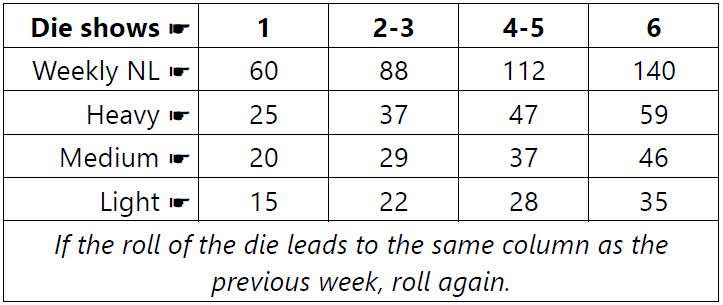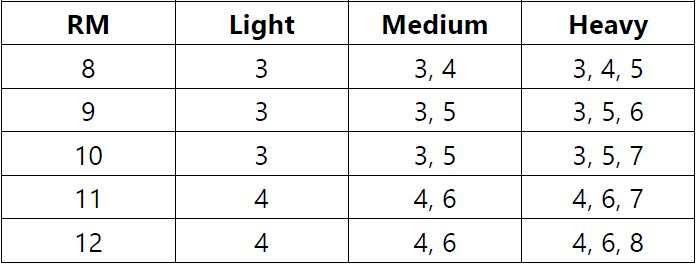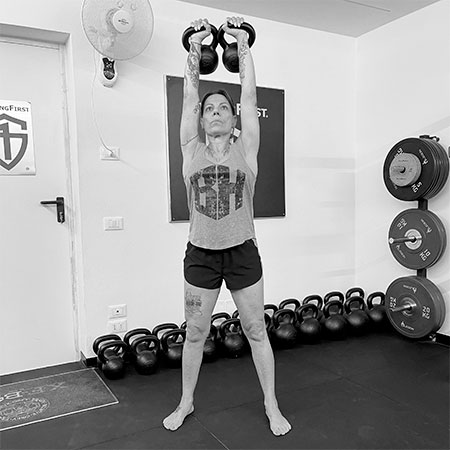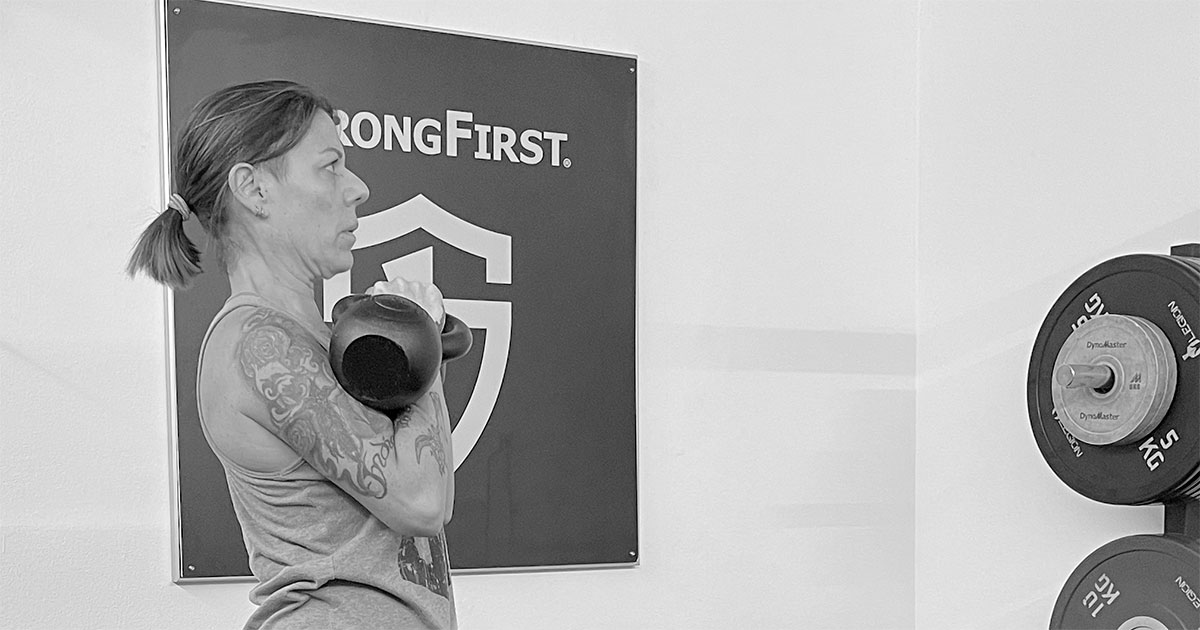You want to build strength and rock-hard muscles, but your busy schedule hasn’t allowed you to train regularly, you are under time constraints, and your sessions need to be time efficient, flexible, and engaging? Keep reading, I’ve got something for you.
The plan I’m about to share is something I designed for my wife Alice, and I’m going to use her training log to explain how the plan works and how to follow it. But first let me tell you more about her training background.
Alice’s Background and Training
Alice was a national level competitive natural bodybuilder from the 90s through the early 2000s. She won more than one national Italian title and was a finalist at the Europeans. Once she hung up her competing suit she continued to train consistently until the birth of our daughter, Alessandra, in 2012.
When our daughter was born, Alice’s lifestyle changed radically. Our parents live far away, and we had no one who could help us with our daughter. I was traveling and teaching almost every weekend and Alice’s life became very hectic between the tasks of being a mom and managing her tattoo studio. Of course, her training regimen suffered, as it wasn’t the priority anymore. We have a well-equipped home gym in our basement and over the years, Alice would hop in the gym occasionally and do some “random acts of variety.” In part because she is genetically gifted and in part because of the foundation she built over decades of consistent training, a session here and there was all she needed to maintain a good-looking shape.
Now at the threshold of 50 things have obviously changed and training consistently has once again become a priority for Alice, not only for aesthetics, but also for health and well-being. Maintaining strong and toned muscles, cardiovascular health, good bone density, and preventing the accumulation of excess fat are now essential. The time for random acts of variety is over.
To design a plan that suited both Alice’s needs and schedule, and guarantee she would follow it, I knew it needed to be:
- Time-efficient
- Simple
- Flexible
- Entertaining
I came up with the “Cruiser,” a simple yet effective Built Strong template based on four movement patterns and the roll of a die that calls for three sessions per week.
The four movement patterns are the following.
- Squat
- Upper body pull
- Hip hinge
- Upper body press
For tools, I opted for kettlebells. Considering the four main features of the plan, I can’t think of anything that is more time-efficient, simple, flexible, and entertaining than kettlebells. And to make it even more time-efficient and entertaining, I decided to use double kettlebells across the board.
Here are the exercises I included in the plan:
- Double kettlebell front squat
- Kettlebell gorilla row
- Double kettlebell dead clean
- Double kettlebell military press
For each exercise, except the double kettlebell dead clean, you must test and find a kettlebell size that corresponds to your 8-12RM (number of explosive reps) with strict form. For the double kettlebell dead clean, find a kettlebell size that allows you to maintain explosiveness for 8-12 reps, meaning that after the hip snap the kettlebells reach the rack position without needing to “curl” them into it. After testing, take note of the kettlebell size and the RM for each exercise.
You will execute the exercises in pairs, alternating one set of the first with one of the second and resting as long as needed between sets.
See how the exercises are paired together below.
A1—Double kettlebell front squat
A2—Kettlebell gorilla row
B1—Double kettlebell dead clean
B2—Double kettlebell military press
Below is the weekly schedule.

As you can see, you will train all four exercises in each session, but from session to session the order, volume, and effort will change.
To establish the weekly volume and its distribution across the heavy, medium, and light days, you must roll a die at the beginning of the week. Do this for each one of the four exercises, as we want their training volumes to be independent from each other.
The table below shows the weekly volume assigned by the result of the roll and its breakdown among the heavy, medium, and light days.

Finally, the volume of each session is totaled by completing a variable number of sets and reps, according to each exercise’s tested RMs and whether it is a heavy, medium, or light day.
The table below shows the rep schemes for the heavy, medium, and light days, according to the tested RM.

One Example
To clarify the procedure, please allow me to provide an example of one week of training using Alice’s data and her training log from Week 1.
Below are Alice’s tests results.
- Double kettlebell front squat ? 8RM @2x20kg
- Kettlebell gorilla row ? 8RM @2x16kg
- Double kettlebell dead clean ? 9 explosive reps @2x12kg
- Double kettlebell military press ? 11RM @2x12kg
According to the rep schemes table, Alice’s reps are the following.

Here’s what Alice rolled at the beginning of Week 1.

Here’s what Alice did in Week 1.

After her usual warm-up, Alice started with the dead clean and military press combo. She set up for the dead clean, did the first set of three reps, and parked the kettlebells. She rested until she felt ready, then cleaned the kettlebells and knocked out four presses. After some more rest, she set up again for the dead clean and did five reps. She rested again and then did a set of six presses. She continued this way until she ran out of sets of dead cleans and then carried on with the presses until she completed all the sets (as you can see from the table above, she had to complete six sets of dead cleans and eight sets of presses).

After completing the dead clean and the press, she moved on to the front squat and gorilla row combo. As she did above, Alice alternated the former with the latter until she ran out of sets of gorilla rows, then she continued with sets of squats until she accomplished the prescribed daily volume.


In Sessions B and C, the exercises are paired up and executed in the same manner as in Session A, hence there is no need for further explanation.
Duration of the Plan and How to Adjust the Load
The Cruiser doesn’t have a set duration and can be carried on for months and still be effective. If you decide to give it a shot and carry it on for more than six to eight weeks, it is wise to retest the kettlebell sizes and the RMs occasionally.
If you feel that the kettlebells start to feel light and your sets are becoming effortless, you can retest your RM with the same kettlebell sizes or assess whether you are able to increase the weight while remaining in the 8-12RM range. If you test an RM with the same weight and complete more than twelve reps, you certainly must increase the weight. Once you have your new weights and/or RMs, you can adjust the rep schemes accordingly and carry out the plan.
If You Want More…
The Cruiser is actually a simplified version of another plan I have designed recently called the “Battleship.” This plan is outlined through a grid that resembles a battleship board game (like a battleship, a cruiser is a man-of-war only smaller). To execute the plan, you roll a die twice and use the result of the first roll to select a column and the result of the second roll to select a row. The cell indicated by the intersection of the selected row and column will outline your training for the week. You will roll the die twice for each lift you are training at the beginning of each week. It’s as simple as that.
The Battleship plan will be shown in its entirety for the first time at Programming Demystified, StrongFirst’s new professional seminar taking place in October. I will have the honor of co-teaching this seminar with Pavel and Hector Gutierrez Jr.
After Programming Demystified was announced and opened for registration, I received many inquiries requesting information about one of the templates we will be sharing, the BTS-RND algorithm. The BTS-RND is the foundation for the Battleship plan. BTS, of course, stands for Built Strong and RND is an acronym used in computer science that stands for random.
Although it may seem that this strategy breaches any rule dictated by the logic of progression and simply assigns a series of random practices, this is not so. First, unlike most western training strategies which comply with the principles of progressive overload, Built Strong and its father Plan Strong™ comply with the principles of variable overload. Second, rather than random I would define the BTS-RND strategy as “random within railroad tracks.” While there is a random component, the way the grid is designed and the rules for applying the results of the die rolls ensure that the ongoing sessions comply with all the principles of the Plan Strong and Built Strong systems.
Of course, during Programming Demystified we will not limit ourselves to just sharing the grid, but will explain in detail how it is structured and teach participants how to create their own plan based on the target goal, volume, intensity, etc.
If you want to learn more about the Battleship plan, do not miss the upcoming seminar Programming Demystified, during which Pavel, Hector, and I will share this and countless other programming strategies to take your results and those of your students to the next level.
The BTS-RND/S Plan on the StrongFirst Training App
One more thing…
The Cruiser, complete with the die roll feature, will be available in the near future on the StrongFirst Training App, which will be available for download on the Apple Store and Google Play.
What are you waiting for? Roll the die and get strong and rock-solid.
Programming Demystified, the new StrongFirst Seminar with
Pavel Tsatsouline, Fabio Zonin, Hector Gutierrez Jr.





